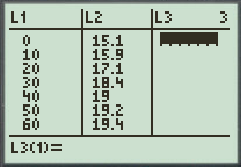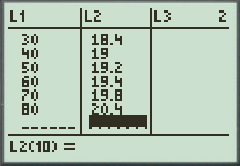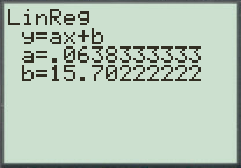
College Algebra in Context with Applications for the Managerial, Life, and Social Sciences 3rd Edition by Ronald J Harshbarger, Lisa Yocco
النسخة 3الرقم المعياري الدولي: 032157060X
College Algebra in Context with Applications for the Managerial, Life, and Social Sciences 3rd Edition by Ronald J Harshbarger, Lisa Yocco
النسخة 3الرقم المعياري الدولي: 032157060X تمرين 38
الحلول خطوة بخطوة
الخطوة 1 من4
Convert the data from the chart into the table as follows:
| Year | Years past 65 women |
| 1950 | 15.1 |
| 1960 | 15.9 |
| 1970 | 17.1 |
| 1980 | 18.4 |
| 1990 | 19 |
| 2000 | 19.2 |
| 2010 | 19.4 |
| 2020 | 19.8 |
| 2030 | 20.4 |
(a) Let us find a linear function that models the data, with x equal to the number of years after 1950 and y equal to the number of years the average 65-year-old woman is estimated to live beyond age 65.
that models the data, with x equal to the number of years after 1950 and y equal to the number of years the average 65-year-old woman is estimated to live beyond age 65.
Enter the data from the above table in the lists of a graphing utility.
The figure below shows a partial list of the data points.


The equation that fits the data, found using linear regression with a graphing calculator.

 that models the data, rounded to three decimals is
that models the data, rounded to three decimals is .
. الخطوة 2 من 4
الخطوة 3 من 4
الخطوة 4 من 4
College Algebra in Context with Applications for the Managerial, Life, and Social Sciences 3rd Edition by Ronald J Harshbarger, Lisa Yocco
لماذا لم يعجبك هذا التمرين؟
أخرى 8 أحرف كحد أدنى و 255 حرفاً كحد أقصى
حرف 255








